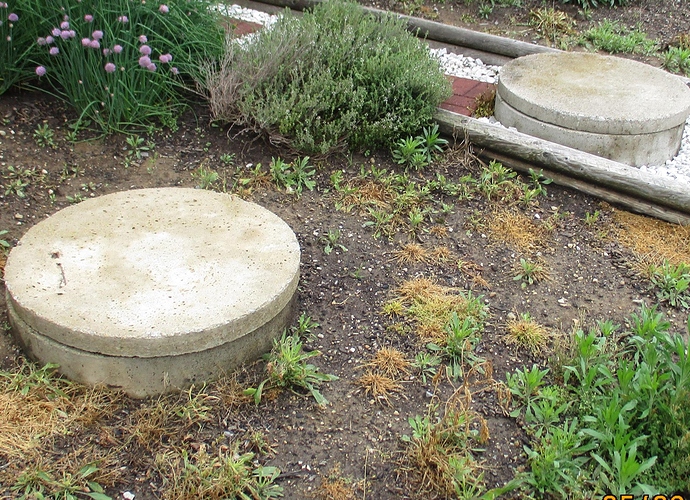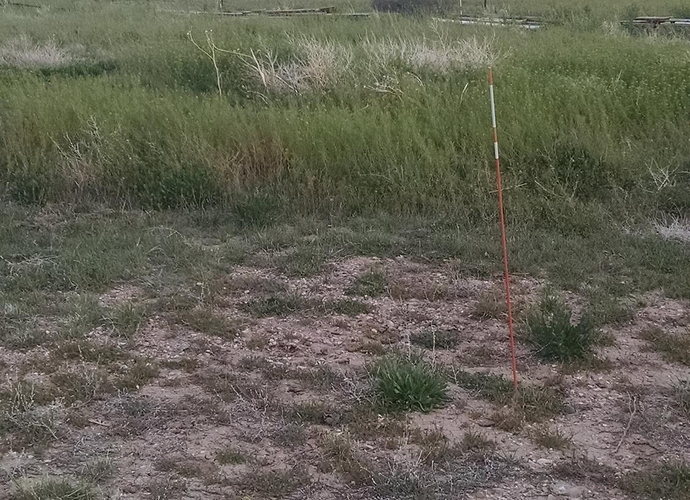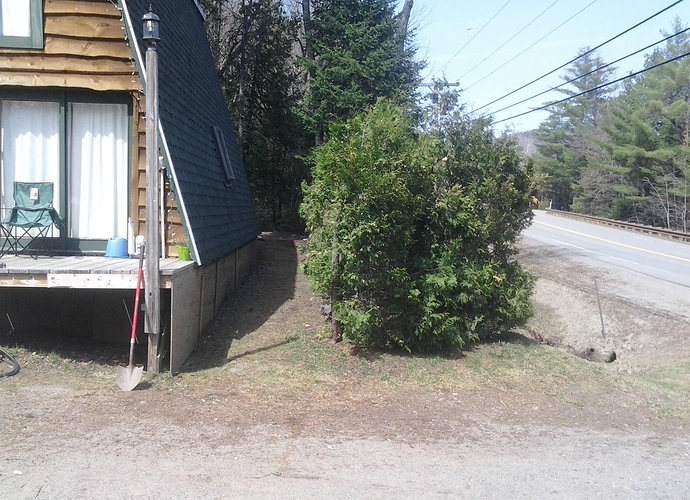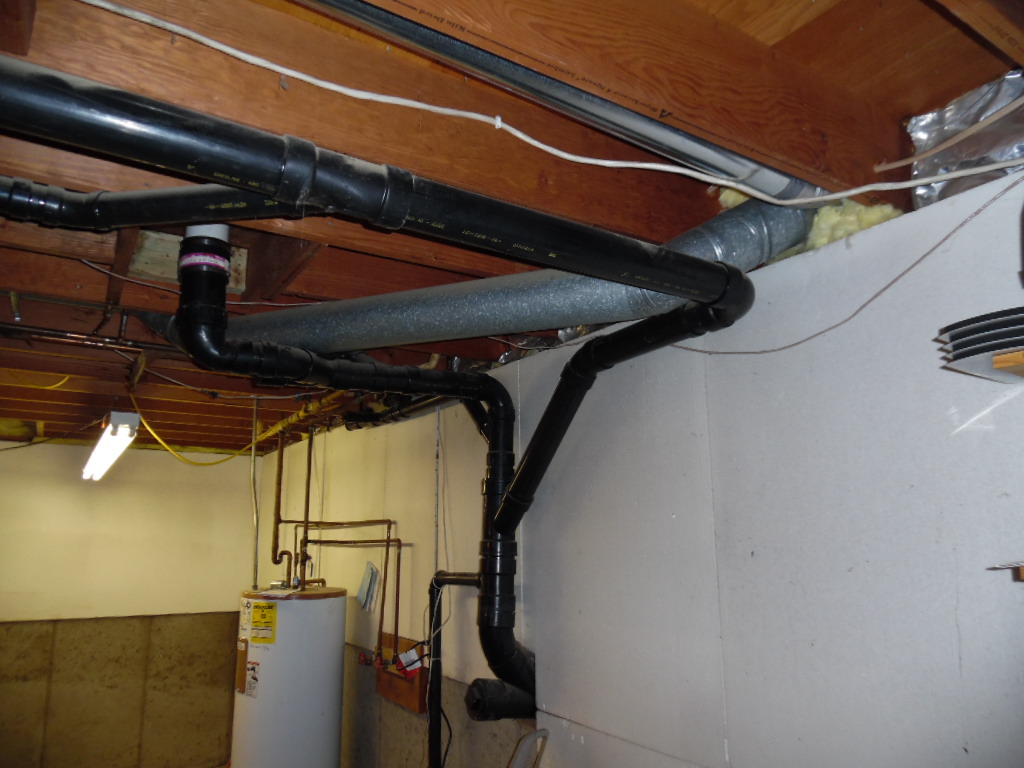The septic tank is the most critical component of a homes plumbing system. Proper maintenance and annual inspections can help determine its proper function. The proper function of the septic system will keep the sludge and effluents in the tank while letting the water pass through to be absorbed in the field lines.
The image I choose is of an old leaky faucet. The client like the old fashion look. However after we calculated the water use could be an extra 150 gallons per day. Then when I explained what that means to the septic system ie ;the extra flow put stress on the absorptive capacity of soils; and may push solids out of the treatment tank and clog the lines or leach field.
I then suggested some new fixtures that look old and cost much less than a new septic system.
Dan Holzinger
Home Inspector License #HI01400048
Zinger Inspections
I read an article on cisterns I found it interesting. Although I probably do not need this course at this time. I have not seen very many cisterns in southern Indiana when doing home inspections. The idea of checking the water biannually if it is potable water is a good idea. When I lived in Bermuda for 3 years I do not think our cistern was ever checked. I was always a little concerned but never sick. I just thanked God and moved on.
I read another article on older plumbing mentioned that galvanized plumbing has a life expectancy of 20 to 30 years. I can confirm this in 2 separate instances. The first was in the house I grew up in, built in the 1900’s. The distribution water lines would sweet and start spraying water at the worst possible times. Like while we were on vacation, or Christmas morning. The other example was during an inspection of a bathroom, I ran my hand under the s trap and put my finger through the galvanized drain pipe. Just a few personal plumbing experiences
Dan Holzinger
Zinger Inspections. Bottom of Form
Access lids to system located behind garage. Access port is in poor condition and screws are striped in lid. Lids should be secured to prevent potential safety hazard.
I thought I knew a fair amount about septic. Then I took this course. I didn’t know that much. I now feel more confident educating buyers on the do’s and don’ts of septic care. As well as what to look for during an inspection.
This septic tank was installed to close to the home. The tank is only 8ft from the home and directly under a bedroom window and 5ft from the patio. After removing the concrete lid to gain access, the access ports were sealed with bee’s wax to stop the smell from the tank to the bedroom.
The septic system is the most expensive fixture in any house. It is important to have an annual inspection to insure the life span is not shortened. A well maintained septic system can protect the environment and the health of the people that live in the home.
Sewer and septic systems private or public create gases. The largest constituent is Methane gas. This is why proper plumbing and traps are important.
I have just found the septic tank lid and vent. I will now be able to evaluate the situation and determine what condition the septic system is in. Thanks to the training I feel confident that I will be able to locate any problems and find more tamks and fields in the future.
This is a picture of my own absorption field. Notice that we have placed markers around it to direct traffic flow off the field. We did this to keep the propane truck, livestock trailers, and other heavy equipment from driving on top of the absorption field. This should help the life and flow of the septic system.
This photo illustrates a newly installed three compartment combination septic and dosing tank. The first four inch pvc pipe starting on the left is the access for the inlet baffle observation port. This is where the raw sewage from the residence enters the Tank. The green large lid next is the main access to the primary compartment of the septic tank. The third pipe, pvc, is an observation port to the secondary baffle. The next green lid is a main access to the secondary treatment tank. The third green lid is the access the dosing tank, pump and switches. To the right of that is the elevated sand mound, or absorption area, to which the effluent is pumped. The condition of this system is new and not yet in use.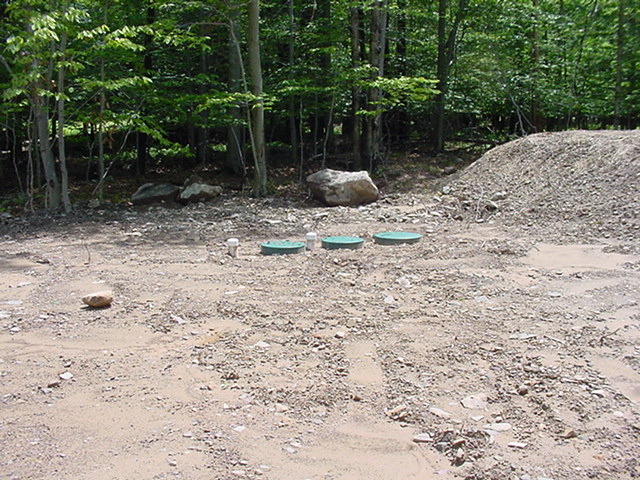
The house that is being inspected did not include a septic inspection. However, the septic tank cover was indentified for the buyer. The plumbing drains were inspected and work satisfactorily.
SEPTIC SYSTEM PURPOSE
Septic systems treat and disperse relatively small volumes of wastewater from individual and small numbers of homes and commercial buildings. Septic system regulation is usually a state and local responsibility. The EPA provides information to homeowners and assistance to state and local governments to improve the management of septic systems to prevent failures that could harm human health and water quality.
The attached photo depicts an existing onsite wastewater adsorption area as my component for review and discussion. Based on records research and confirmed by site conditions, the entire septic system was installed over 30 years ago and does not appear any alterations have occurred. The adsorption area (locally referred to as a leach field), is located on a narrow strip of land between the residence and the roadside ditch. Of concern for the proper operation of the component are the close proximity of the hedgerow, and thus the roots of the hedges to the system component, and also the roof casting rainfall runoff down onto the component. It would be a proper recommendation to note removal of the hedges to prevent root intrusion into the component which could result in a reduction of dispersal of effluent into the soil, and diversion of the roof runoff through a gutter system.
I have read the Inspection Library Article entitled “Garbage Disposals for Inspectors” by Nick Gromicko and Kenton Shepard.
While performing a wastewater system inspection, it is important to review the residence and the plumbing to determine if a waste food grinder system is installed, and confirm that the system drains to the onsite wastewater system. The presence of such an appliance indicates that the occupants can send food wastes into the onsite wastewater treatment system and thus added load could be placed on the treatment tank if it is not pumped more regularly than a residence without a food waste grinder, assuming that the unit is utilized regularly by the occupants. The article does note that as a benefit to the user, that food waste grinders prevent excessive wastes from being a burden on the household solid waste systems (trash). Unfortunately, the food waste entering the household wastewater flow can serious strain on the wastewater system if it is not maintained with regular pumping and if tank baffles are not kept in good condition. Many folks I have encountered who leave a public wastewater system are unaware that an onsite wastewater system cannot be abused with what they dispose of down the drain and forget about. I hope many inspectors use the opportunity to educate their clients on proper use of a food waste grinder when they encounter them in residences on private wastewater systems.
This is a picture of the septic system in the basement of a home previously inspected. It shows the ABS plastic pipe being used for the entire house. It has not been mixed with the use of PVC. It shows no signs of leakage and is functioning correctly.
Sewer Gases in the Home
If you suspect that any odors might be caused by sewer gases, contact a qualified plumber as they pose risks to building occupants. Hydrogen sulfide poisoning, asphyxiation, odor, fire and explosion are some of the risks that are the most common. Dried-out piping and plumbing fixtures, cracks in the plumbing drain line or vent pipes, diffusion from a leach field septic system, plumbing vents installed too close to air intakes or windows in homes equipped with HVAC air handlers that admit outside air for ventilation are possible culprits of this issue.
Septic Systems
Your septic system is your responsibility and the septic tank should be pumped out every 3 to 5 years to keep it in proper working order. Some of things that one can do are to use water efficiently and flush responsibly. A failing septic system is very expensive to repair or replace so do your best on keeping it in working order.
Component example septic
This image if of a 30 year old septic tank that is starting room fail and needs to be replaced .
The concrete on the inside of the tank is starting to decay .this was caused by the gasses inside the tank
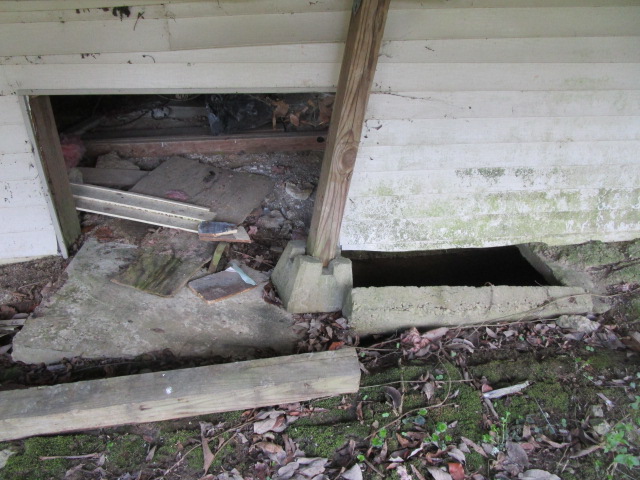
This septic tank had a damaged lid and the deck and addition had been built over top off the tank. Notice how one of the deck support posts was sitting on the damaged tank. Never know what you will find at an inspection!


Great articles to read. Really appreciate the detailed descriptions. A true added value to home inspectors.



